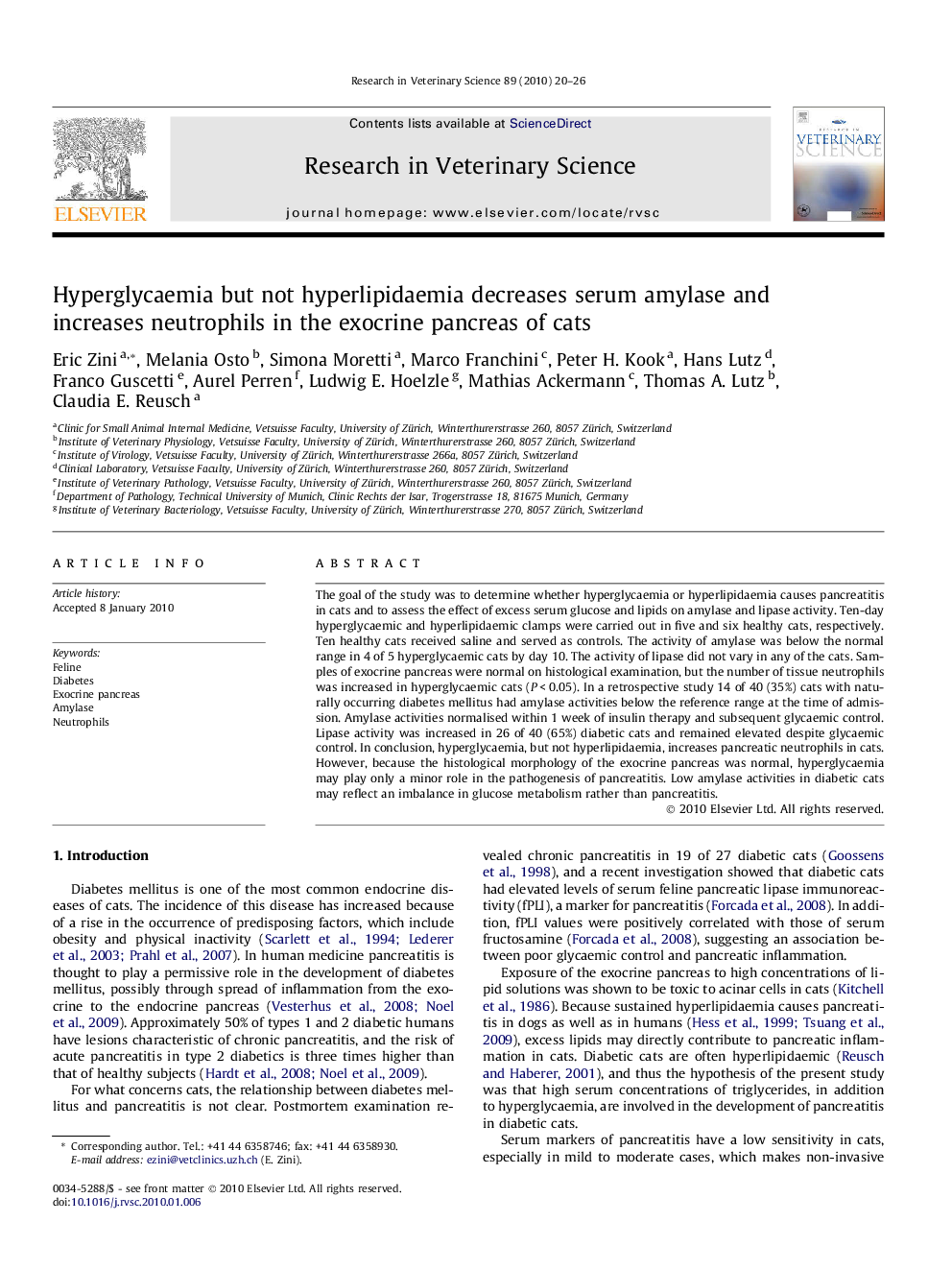| Article ID | Journal | Published Year | Pages | File Type |
|---|---|---|---|---|
| 2455703 | Research in Veterinary Science | 2010 | 7 Pages |
The goal of the study was to determine whether hyperglycaemia or hyperlipidaemia causes pancreatitis in cats and to assess the effect of excess serum glucose and lipids on amylase and lipase activity. Ten-day hyperglycaemic and hyperlipidaemic clamps were carried out in five and six healthy cats, respectively. Ten healthy cats received saline and served as controls. The activity of amylase was below the normal range in 4 of 5 hyperglycaemic cats by day 10. The activity of lipase did not vary in any of the cats. Samples of exocrine pancreas were normal on histological examination, but the number of tissue neutrophils was increased in hyperglycaemic cats (P < 0.05). In a retrospective study 14 of 40 (35%) cats with naturally occurring diabetes mellitus had amylase activities below the reference range at the time of admission. Amylase activities normalised within 1 week of insulin therapy and subsequent glycaemic control. Lipase activity was increased in 26 of 40 (65%) diabetic cats and remained elevated despite glycaemic control. In conclusion, hyperglycaemia, but not hyperlipidaemia, increases pancreatic neutrophils in cats. However, because the histological morphology of the exocrine pancreas was normal, hyperglycaemia may play only a minor role in the pathogenesis of pancreatitis. Low amylase activities in diabetic cats may reflect an imbalance in glucose metabolism rather than pancreatitis.
